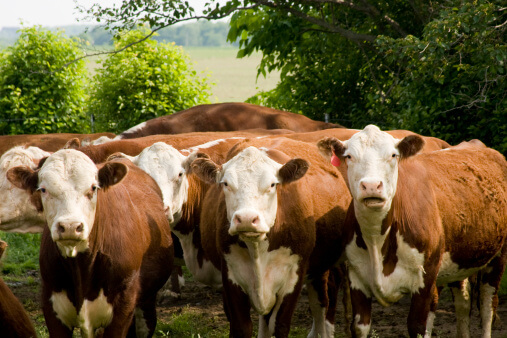Using diagnostics to ensure effective deworming
Jul 06, 2020

By Merck Animal Health
Erin deKoning, D.V.M., of the Rock Veterinary Clinic in Luverne, Minn. serves both cow/calf and feedlot clients in southwestern Minnesota and nearby states of South Dakota and Iowa. Working in conjunction with parasitologist Dr. Donald Bliss, her clinic has offered Parasite Evaluation Clinics (PEC) sponsored by Merck Animal Health in addition to their in-clinic diagnostic services.
“Dr. Bliss evaluates results from each producer’s herd and gives a clear picture of what the operation is facing from a parasite load standpoint,” says Dr. deKoning.
Dr. Bliss also helps determine strategic deworming strategies based on the diagnostic results. “Several of our feedlot customers receive cattle from different areas of the country, often carrying different species of parasites than we typically find in this area,” she explains.
No matter the type of operation, Dr. deKoning recommends concurrent deworming. “If we use a pour-on ivermectin alone, we only get utilize about 50 percent efficacy. Our standard protocol is to use two classes of dewormer – endectocide and fenbendazole – at the same time.”
She adds: “We show our clients the math. If you spend that additional $3 per head on concurrent deworming, you only need 2 pounds of added weight to justify the cost. The actual weight gain advantage far exceeds that. Concurrent deworming will more than pay for itself.”
Dr. deKoning says they work with their clients on the timing of their deworming program, including summer deworming protocols. “We incorporate non-handling forms of deworming when cattle are out on summer pastures to minimize labor,” she says.
The PECs illustrate what exactly is going on in an operation. “In a tough market situation, it’s easy to look for what you can cut,” Dr. deKoning explains. “With the PECs or our in-house diagnostics, I can reference the work and help the producers recall what we saw from a worm standpoint in their operation and why a strategic deworming program is essential.”
Erin deKoning, D.V.M., of the Rock Veterinary Clinic in Luverne, Minn. serves both cow/calf and feedlot clients in southwestern Minnesota and nearby states of South Dakota and Iowa. Working in conjunction with parasitologist Dr. Donald Bliss, her clinic has offered Parasite Evaluation Clinics (PEC) sponsored by Merck Animal Health in addition to their in-clinic diagnostic services.
“Dr. Bliss evaluates results from each producer’s herd and gives a clear picture of what the operation is facing from a parasite load standpoint,” says Dr. deKoning.
Dr. Bliss also helps determine strategic deworming strategies based on the diagnostic results. “Several of our feedlot customers receive cattle from different areas of the country, often carrying different species of parasites than we typically find in this area,” she explains.
No matter the type of operation, Dr. deKoning recommends concurrent deworming. “If we use a pour-on ivermectin alone, we only get utilize about 50 percent efficacy. Our standard protocol is to use two classes of dewormer – endectocide and fenbendazole – at the same time.”
She adds: “We show our clients the math. If you spend that additional $3 per head on concurrent deworming, you only need 2 pounds of added weight to justify the cost. The actual weight gain advantage far exceeds that. Concurrent deworming will more than pay for itself.”
Dr. deKoning says they work with their clients on the timing of their deworming program, including summer deworming protocols. “We incorporate non-handling forms of deworming when cattle are out on summer pastures to minimize labor,” she says.
The PECs illustrate what exactly is going on in an operation. “In a tough market situation, it’s easy to look for what you can cut,” Dr. deKoning explains. “With the PECs or our in-house diagnostics, I can reference the work and help the producers recall what we saw from a worm standpoint in their operation and why a strategic deworming program is essential.”